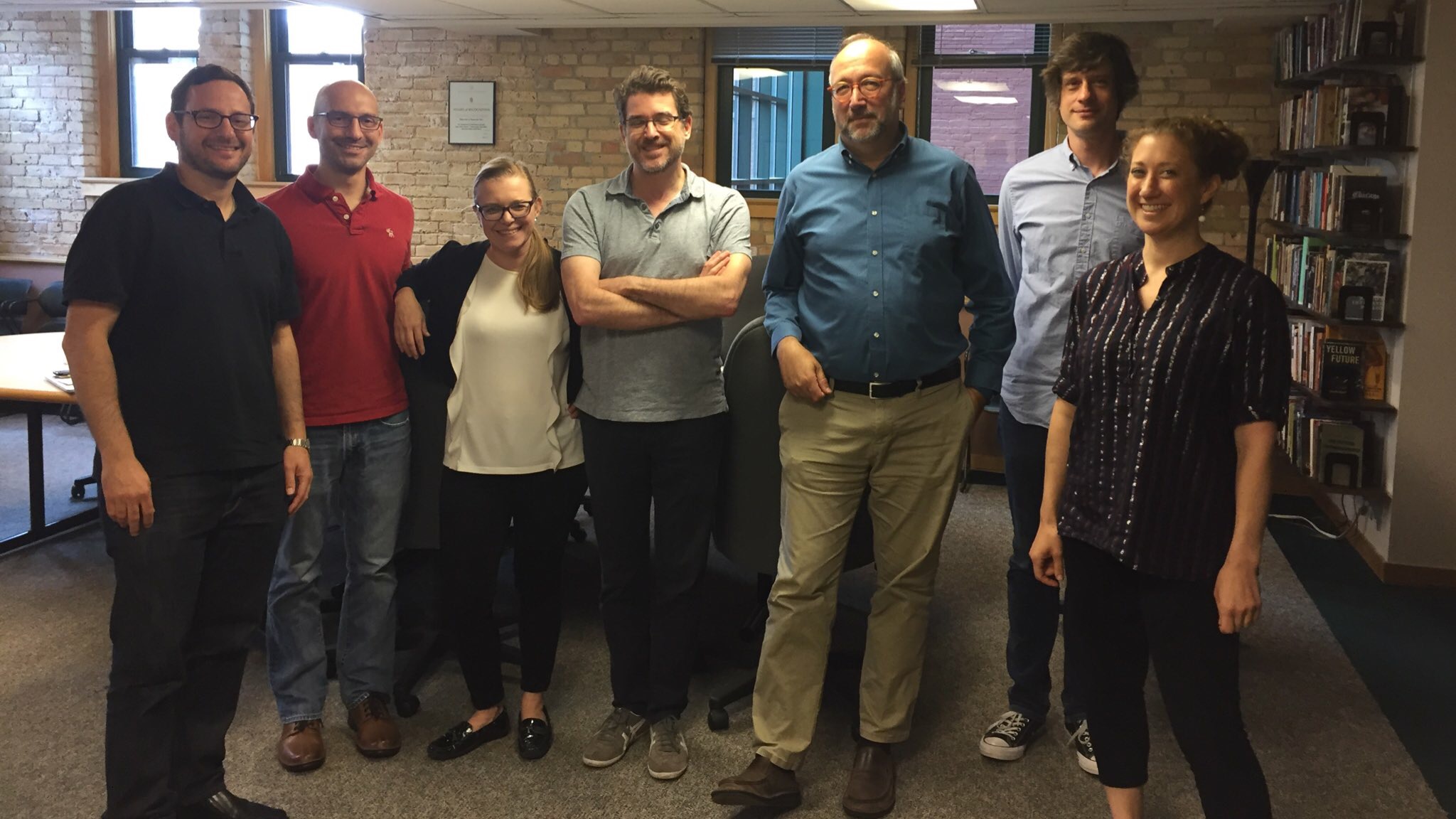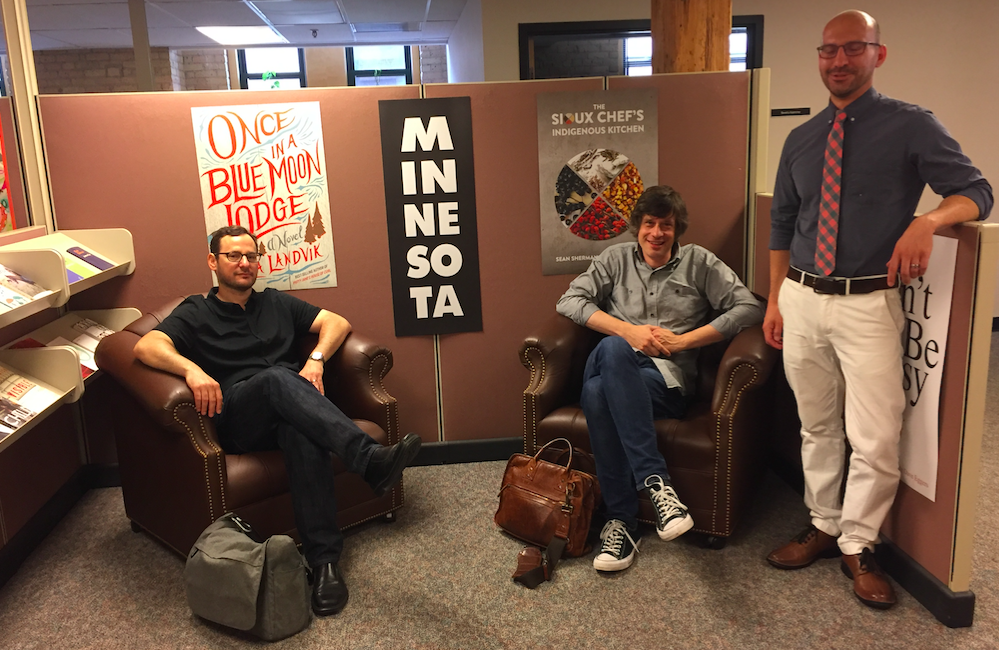
Manifold Meeting in Minnesota: Rhubarb, Accessibility and Preservation, and American Ninja Warrior
July 11th through 13th, the Manifold team convened in sunny if stormy Minneapolis for three days of meetings to assess progress, make decisions about the Manifold Digital Services Pilot, plan steps toward the version 2.0 release, and, of course, try out the downtown food truck scene.
The Minnesota crew—Doug, Susan, Terence, and Dan—plied us with coffee and pastry topped with Susan's homemade rhubarb jam as we set out Wednesday morning to tackle our hefty agenda. Zach ran through the progress Cast Iron Coding has made, walking us all through the road map on Github. Much of the recent development work has focused on improving accessibility standards and adding support for new formats (Word documents and LaTeX) that Manifold can ingest directly into the reader.
In the roadmap discussion, we talked a lot about the different ways that publishers are using Manifold and about how project home pages, which are currently uniform, could become more flexible to accommodate those varying use cases. We spent time discussing those use cases, determining what should they be called, and thinking through what they would comprise—what, for instance, makes a journal a journal and not a multiple author open educational resource? Our thoughts on all of these matters have been informed and inspired by Manifold users, who have consistently come to us with questions and thoughts about how the platform can be expanded in new ways. As Niels-Oliver Walkowski said on Manifold’s public Slack channel, “The prospects look really exciting.”
Looking ahead to version 3.0, Manifold has plans for project templates and theming. As the Cast Iron team continues to improve accessibility and ease of implementation for all users, we are also considering the balance between user control and user responsibility. Manifold has worked hard to establish a platform that is both flexible for publishers and streamlined enough to provide for a seamless and uniform user experience.

Version 4.0 will focus on providing publishers the means to set up Manifold instances that are oriented around single projects, as an alternative to the default library view, where readers peruse a publisher's entire catalog. With the single-project setup, publishers will still have the ability to publish on Manifold as many projects as they would like, using only one backend interface. However, projects would now each have their own distinct web presence, allowing them to be more neatly nested into existing websites and offering those who only have a handful of projects for the platform the means to present them in a more appropriate way. Annotation groups—useful for classes or groups of readers who would like to comment on a text together—are also on deck for version 4.0. The team had a provocative conversation about what degree of administration and content moderation Manifold should accommodate. Peer review and classroom contexts had everyone thinking carefully about who monitors what and where.
The conversation about preservation and programmatic ingestion slated for version 5.0 brought up a series of questions about what responsibility Manifold has to preserve its interactive components and primed us for our planned meeting with the Minnesota library team. The resource capabilities Manifold offers present the greatest challenges in terms of preservation. Not only do rich resources raise questions of simulation versus static preservation, but interactive content in the form of annotations and reader contributions also poses rights and copyright concerns. Would saving content for the authors and other readers require that Manifold users agree to a creative commons license before publishing any material or leaving any annotations on a text? Would Manifold need to support the moderation of such content? Read on for an overview of our library notes and stay tuned for Terence’s blog post addressing Manifold’s plans for preservation.
Many notes were taken and issues were written before we made our way to the food truck alley. Turning the corner of an otherwise sensible-looking downtown, we came to the veritable parade of colorful trucks purveying everything from organic egg sandwiches to artisan tacos. We ate on the steps in the open air, enjoying each other’s company and talking of travels. Evidently there is a very cold lake near Portland and gauntlets may have been thrown for the next meeting.
In the afternoon, we reconvened to discuss project collections. Much consideration was given to anything that required user input. Still pleased with James Baker’s comment that Manifold is “pleasingly unfussy,” the team is wary of anything that might introduce bothersome fuss.
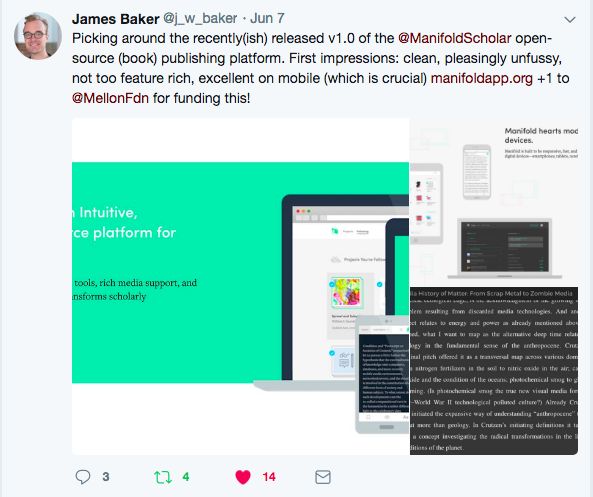
It’s been nice catching all the nice things people are saying as they try out version 1.0.

With what energy remained, we talked through the Manifold Digital Services business model. We thought through what people seem most curious about with Manifold. Rather that reviewing features for new users, we want to refocus the conversation and start highlighting the problems Manifold solves for publishers.
Thursday we met first at the Wilson Library with John Butler, Associate University Librarian for Data & Technology; Emma Molls, Publishing Services Librarian; Jon Nichols, Director of Digital Preservation and Repository Technologies; Kate McCready, Director of Content Services; Carol Kussmann, Digital Preservation Analyst; and Stacie Traill, Metadata Analyst. After Zach presented Manifold, nearly forgetting to demonstrate the share features to cite or link social media which drew exclamations of awe from all present, we dug deep into conversation about preservation. Meeting with the library team offered us not only the chance to talk about Manifold specifically, but also to learn more about library processes for preserving web-based content and to discuss how we might strategically position Manifold to work well with those processes and workflows.
With expertise in the room from so many library departments, the Manifold team was able to ask what each anticipates from publishers and what resources they have to preserve interactive content. The conversation naturally turned to the broader philosophical concerns. What is the responsibility of preservation of a Manifold edition—how much interactivity must you preserve? what permissions would be needed to preserve annotations? what solutions are the libraries pursuing? We learned a bit about the University of Minnesota Libraries digital asset management and preservation solution, Rosetta, and about the best practices the libraries use for preserving a record of digital objects.
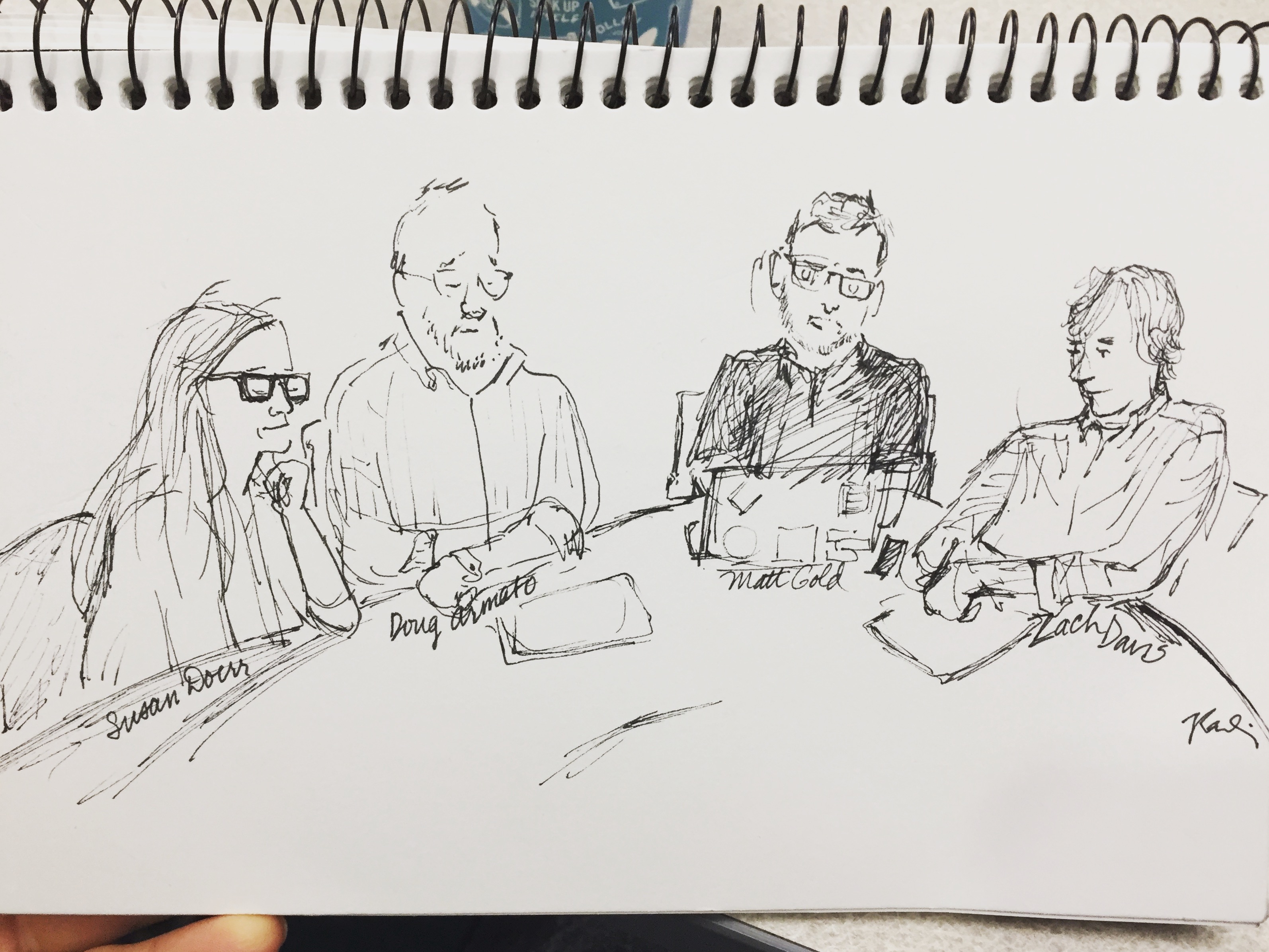
We made our way next to Cafe Alma for a delicious lunch and coffee while we reviewed the wonderful applications for the Manifold Digital Services Pilot Program and considered the ways Manifold could work across the richly varied use cases.
Back at the press office, Zach ran a demo for press employees. Everyone seemed excited with more smiles than questions. After knocking out some ideas for templates for Manifold projects, we were ready to end the day with a quick bite to eat at a local spot. We made it to the bistro around the corner before the downpour! Getting caught in the rain, we were surprised to be captivated by American Ninja Warrior, which happened to be broadcasting on the bar televisions. Feats of strength and ingenious maneuvers seem oddly appropriate to the hurdles and hijinks of digital edition development.
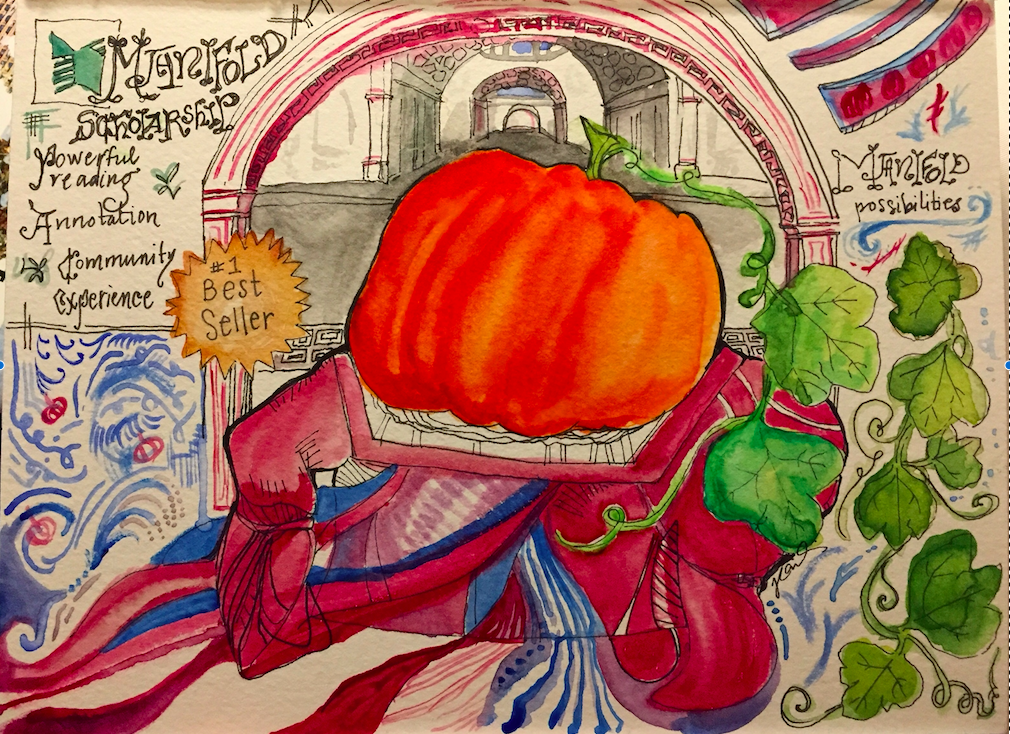
On Friday, we regrouped and laid out the next steps and coming milestones. We dug into templates—what are the logical ways to present simple or enhanced books? Journals or Open Educational Resources? Resource-only projects? Conceiving user interactions for each case, we oscillated between the practical and the philosophical. What do these terms historically evoke and how does Manifold most easily accommodate both the conceptual and functional needs? With the combination of UMP team’s broad array of publishing experience, Matt’s deep familiarity with researchers’ needs, and Zach’s tactical ingenuity for development, we came to a list of templates, that should serve us well without overcomplicating the user experience. These include Simple Book, Enhanced Book, Journal or Collection from single source, Journal or Collection from multiple sources, OER or Teaching Resource, Report or Handbook, and Resource Only. Follow Manifold on Github to see the design progress.
With version 2.0 rolling out soon, Terence hitting the trail for Digital Services trainings, the CUNY Manifold revving up to the edge, everyone’s got a lot going on before we meet again in November in Portland. Releases, and campus visits, and OERs, oh my!
Following an epic lunch of tacos—and the necessary condiment of comparing hot sauce hotness—Zach, Matt, and Jojo headed home to their opposite coasts, and Manifold carried on. To flagrantly misquote Harry Potter, Manifold managed.
If you have any questions or comments or have thoughts on how American Ninja Warrior relates to scholarly publishing, please do chime in our Slack channel or tweet us at @manifoldscholar.
